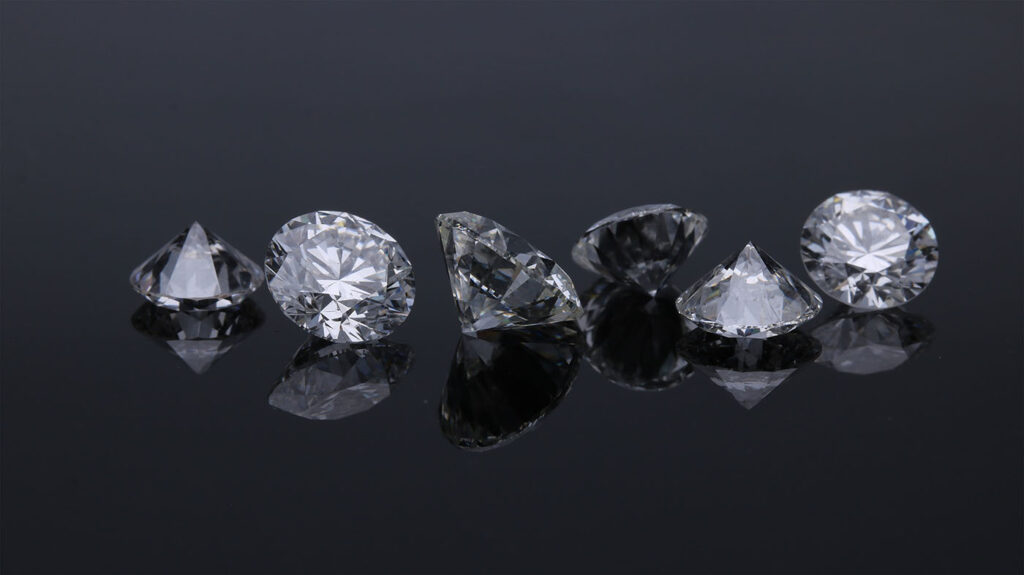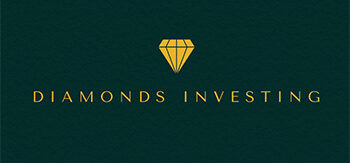Diamond Price Over Time: Explained

Diamonds are precious gemstones that have been valued for centuries for their beauty and durability. Like every investment, the diamond price has changed over time throughout centuries.
ALSO READ: “Are diamonds a good investment?”
Historical value of diamonds
Diamonds have always been a symbol of wealth and luxury and their value fluctuated throughout history.
Ancient India
The first recorded diamond trade can be traced back to ancient India, where diamonds were valued for their perceived spiritual and healing properties.
Diamonds in the Middle Ages
In the Middle Ages, diamonds were mainly used for religious and royal jewelry, and their value was primarily based on their rarity and beauty.
19th century supply
During the 19th century, the discovery of diamond mines in South Africa led to a significant increase in the supply of diamonds. This caused the price of diamonds to drop, making them more accessible to the general population.
4 C’s grading system
However, the introduction of the “Four Cs” grading system (cut, clarity, carat, and color) in the early 20th century helped to standardize the quality of diamonds, and this led to an increase in the overall value.
The price of diamonds continued to rise throughout the 20th century, driven by increasing demand and a limited supply. However, the global economic recession of 2008 had a significant impact on the diamond industry, causing prices to drop. Since then, the industry has seen a steady recovery, and diamond prices have increased once again.
Today, diamond prices are determined by a combination of factors, including supply and demand, market conditions, and the specific characteristics of the diamond itself.
The price of a diamond can vary greatly depending on its size, quality, and cut. The price of a one-carat diamond, for example, can range from a few thousand dollars to tens of thousands of dollars.
In conclusion, the historical price index of diamonds has fluctuated throughout history, driven by factors such as supply and demand, market conditions, and the specific characteristics of the diamonds.
Today, diamond prices continue to be determined by a combination of these factors, making them a valuable and sought-after commodity.
Why are diamonds so special?
Diamonds are considered special for several reasons.
Hard and durable
Diamonds are extremely hard and durable. They are the hardest naturally occurring mineral on Earth, making them highly resistant to scratches and other forms of damage.
This makes them suitable for use in a wide range of industrial applications, such as cutting, drilling, and polishing.
Unique brilliance
Diamonds are also highly prized for their beauty. They have a unique sparkle and brilliance that is caused by the way light reflects off of their many facets. The color, clarity, cut, and carat weight of a diamond are all factors that determine its beauty and value.
Symbolic
Diamonds have a long history of being associated with wealth and status. For centuries, they have been used as a symbol of love and commitment in engagement rings and other jewelry.
They are also often given as gifts to mark special occasions, such as anniversaries or birthdays.
All of these factors combined make diamonds special and highly valued around the world.
Why are diamonds expensive?
Diamonds are expensive for several reasons.
Rare
Diamonds are rare. They are formed deep within the earth’s crust and only a small percentage of the diamonds that are mined are suitable for use in jewelry. This rarity makes diamonds valuable and desired.
High demand
The demand for diamonds is high. Diamonds are highly prized for their beauty and have a long history of being associated with wealth and status.
They are used in engagement rings, other jewelry, and are also given as gifts to mark special occasions, such as anniversaries or birthdays. This high demand drives up the price of diamonds.
Labor-intensive mining
The process of mining and cutting diamonds is labor-intensive and requires significant investment. Diamond mines are often located in remote areas and require large amounts of capital to operate.
Once mined, diamonds must be cut and polished, which is a skilled and time-consuming process. This labor-intensive process also rises the price of diamonds.
All of these factors combined make diamonds expensive, and the price of a diamond can vary.
Diamond price over time
There is not just one index to consult to evaluate a diamond price over time, which makes evaluating diamonds rather complex.
That is because diamond prices over time vary a lot, based on cut, color, clarity, caratage and shape.
There’s a big difference between indexes. For example: one index looks at one type of diamond, while another index looks at another type of diamond. On top of that, historical data often doesn’t go far back in time.
In addition, a lot of indexes found online don’t come from trustworthy sources which makes data can’t be verified.
The graph below is based on research from “Statista” that indicates the price evolution for 1 ct diamond of the highest quality in US dollars, from 1960 until 2016. This gives us a clear overview of the price evolution of diamonds over the last 60 years.

Based on this data, the profit we made if we had bought this type of diamond in the sixties would have been +1045% today.
Of course, it is important to mention that for a different kind of diamond the data could be different.
Read more about diamonds as an investment in the article: “Are diamonds a good investment?”.
